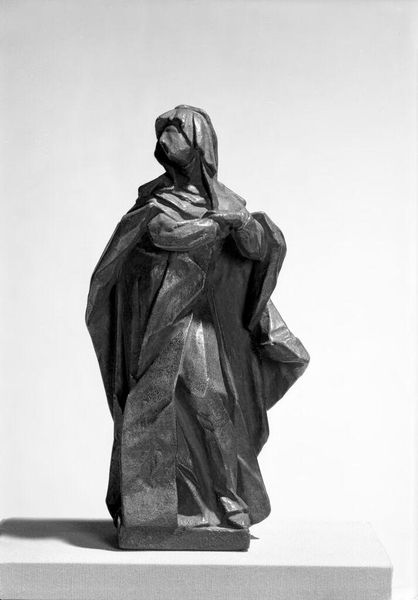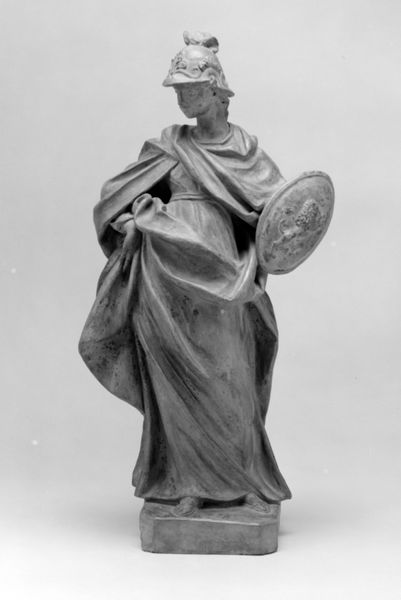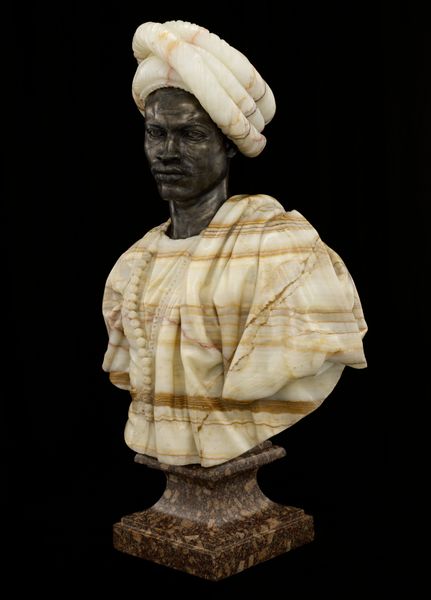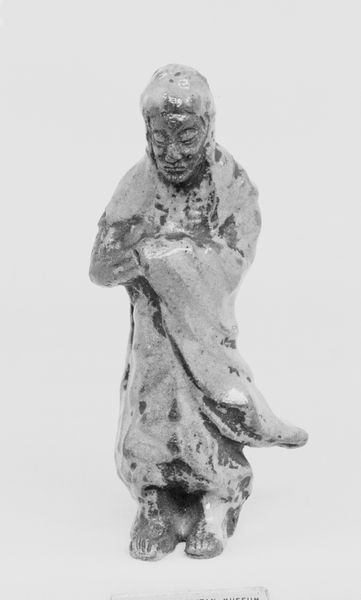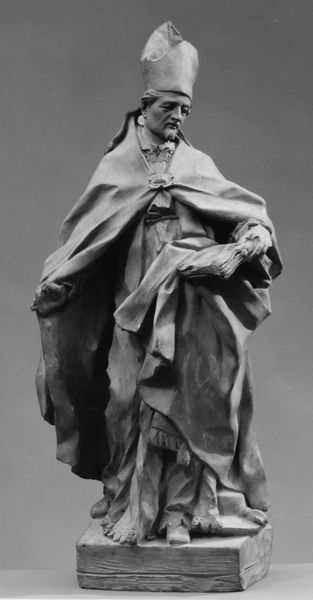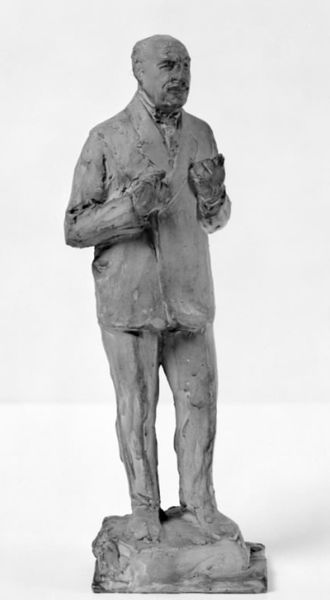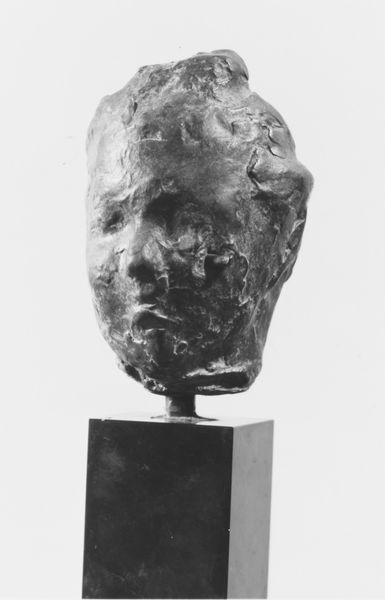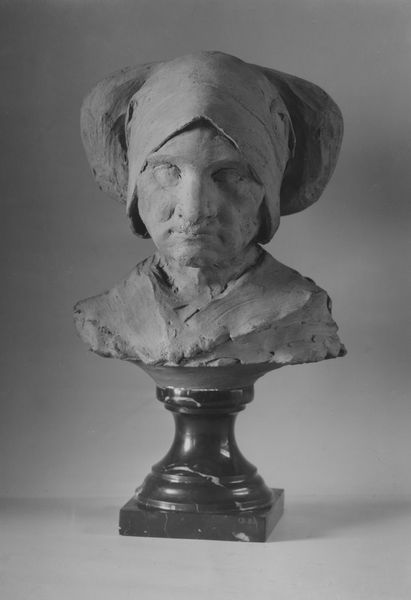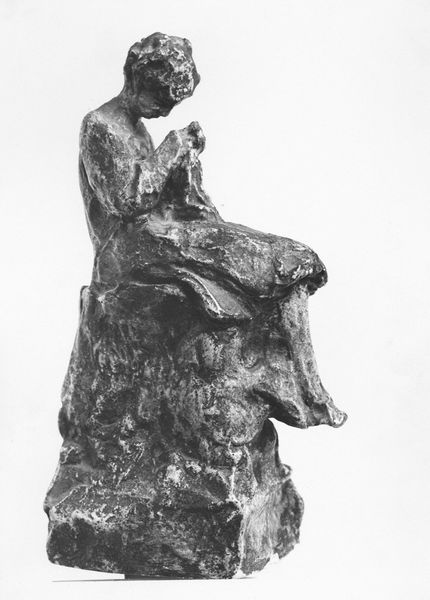
bronze, sculpture
#
portrait
#
sculpture
#
classical-realism
#
bronze
#
figuration
#
sculpture
#
academic-art
Dimensions: H. 52.1 cm (20 1/2 in.)
Copyright: Public Domain
Curator: Let's consider "Bust of a Man" by Pietro Calvi, circa 1875. It resides here at the Art Institute of Chicago. Editor: Bronze can be such a formidable medium, but Calvi achieves a certain softness here, especially in the rendering of the draped fabric. There's a real textural interplay that draws you in. Curator: Absolutely. It reflects Calvi’s deep engagement with classical and academic art traditions. How do we interpret this idealized, yet somewhat exoticized, representation of masculinity within its historical moment? We need to address not just the aesthetics but the ideologies underpinning such depictions. Editor: The hood immediately directs our attention. Considering it's bronze, I can almost feel the weight and the way the fabric would fold and drape. Bronze as fabric; what labour went into translating textile qualities into metal form. How does this specific draping—evoking both religious and possibly orientalist overtones—relate to the prevailing consumption of imagery? Curator: That orientalizing touch is key. The bust participates in a visual language that others and exoticizes North African and Middle Eastern cultures, particularly men, feeding into power dynamics of the period. The idealization masks complex colonial relationships. Editor: I can't help but fixate on the patination of the bronze itself, a deliberate manipulation of the material that adds to its richness, blurring the lines between the material and the figure. What was the sourcing of this material, its original context? It prompts one to consider how the material is mined, manufactured, traded and sculpted. Curator: Considering bronze's industrial associations, one wonders if we could trace the labor dynamics inherent in creating and circulating these images. Whose stories remain invisible within these carefully crafted surfaces? How does this feed into modern notions of race and identity? Editor: Looking at this bronze as the material archive of past making processes is always such a generative thing. From the mines that bore it to the studio in which it came to being, each step shapes this thing into this specific manifestation of a "man" in the later 19th century. Curator: Right. So, through that lens, it offers ways to reflect on the legacies and repercussions embedded within the portrait tradition. Editor: Definitely, now that's something to chew on, thank you for unpacking that complexity, this visit really got me thinking about what lays beyond its visual appeal!
Comments
No comments
Be the first to comment and join the conversation on the ultimate creative platform.
